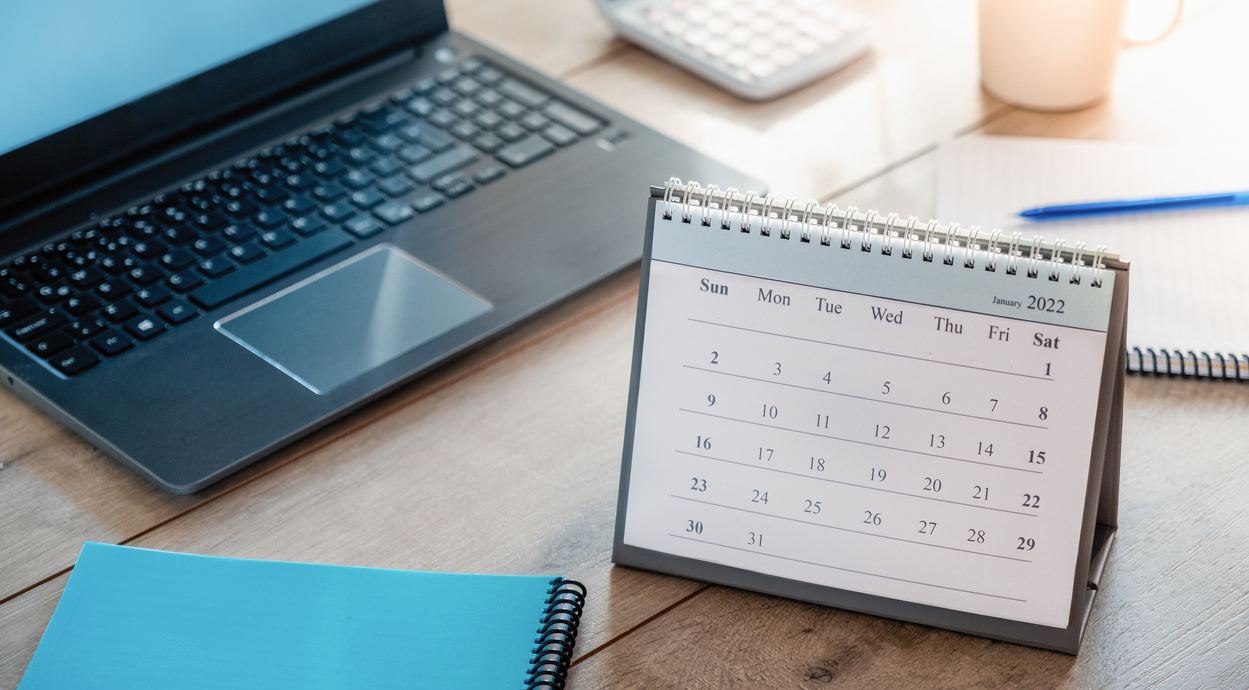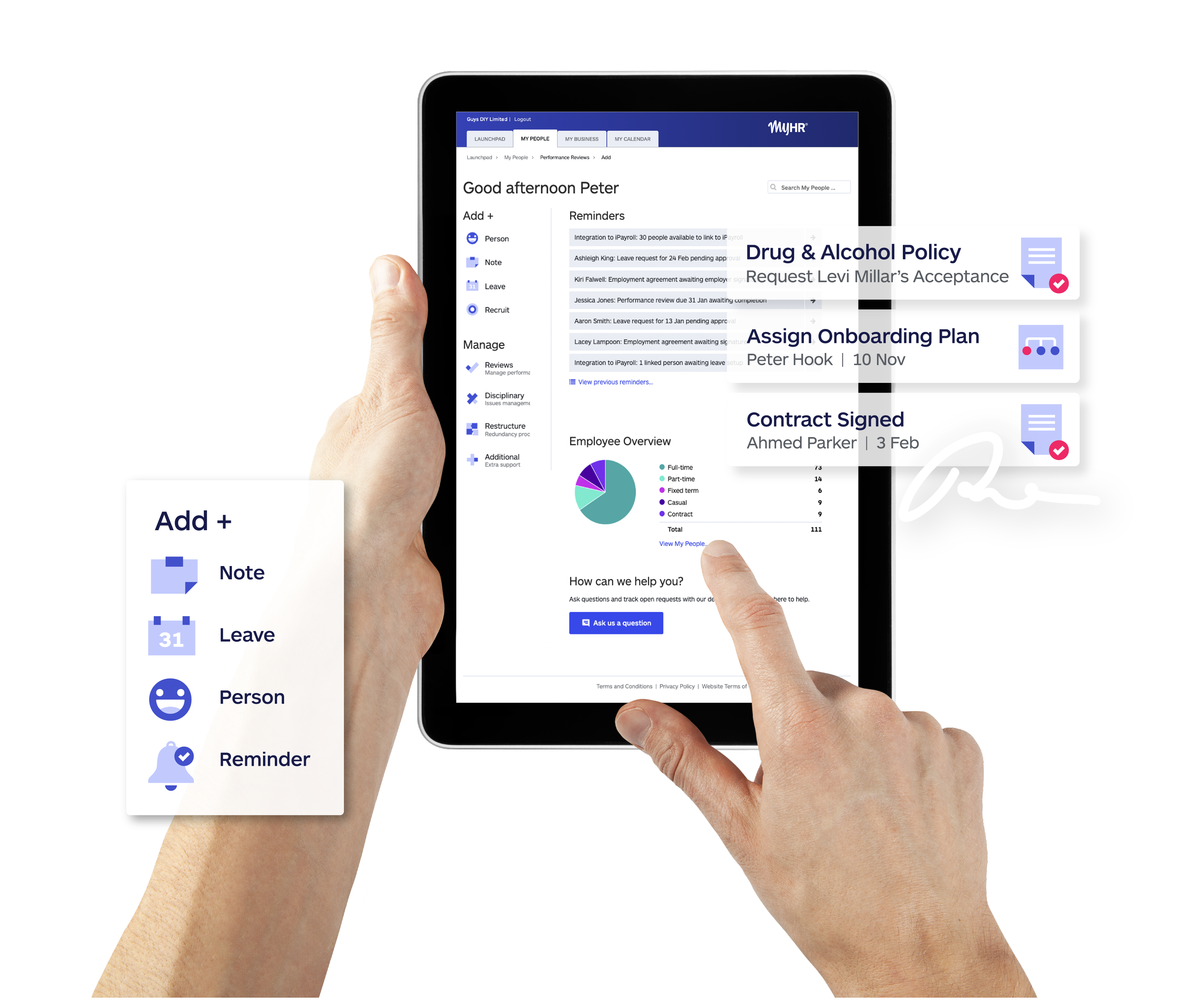
Sick leave is paid time off work when an employee is sick or injured, or their spouse, partner, dependent child or other dependent is unwell or injured.
It's winter, there are many illnesses around, and businesses and workers are under pressure.
At MyHR, we regularly receive queries from our clients about employees taking sick leave and managing absences, so we created this article to explain the details and answer some common questions.
Minimum sick leave entitlements
Under the Holidays Act 2003, most employees are entitled to 10 days of sick leave a year (this increased from 5 days on 24 July 2021). Here's a breakdown:
- Permanent employees (regardless of whether they work full-time or part-time) - once they have worked continuously for the same employer for 6 months.
- Casuals - once they have worked for the employer for 6 months for an average of 10 hours per week, and at least one hour in every week or 40 hours in every month.
- Independent contractors aren’t entitled to sick leave.
Unused sick leave can accrue to a maximum of 20 days.
Sick leave is not pro-rated in any way, so part-time employees who might only work a few days a week still get 10 full days’ sick leave a year (and can accumulate up to 20 sick days a year).
The employer can offer or agree to better terms (e.g. more than 10 days' sick leave a year or a higher cap than 20 days), but you can’t give less sick leave entitlements than these legal minimums.
If in any year the employee doesn’t meet the criteria, they’re not entitled to any new sick leave but can use their sick leave balance which may have carried over from the previous year. They may re-qualify for sick leave as soon as they meet the criteria again.
Notifying the employer
If an employee is sick or injured and intends to take sick leave, they should notify the business as soon as they can (either before they are due to start work or as soon as possible afterwards).
A phone call is the best method of notification, but an email, text or another form of electronic message may be acceptable, depending on the rules and reporting lines your organisation has in place.
Proof of sickness
An employer can request proof that an employee is sick or injured and unable to work once he or she has been on sick leave for three or more consecutive days. The proof is usually a medical certificate from a doctor (the Ministry of Business, Innovation and Employment advises that employers should also accept the official Ministry of Health text message about a positive COVID-19 test result as proof).
In certain circumstances, an employer can request proof of illness or injury within three consecutive calendar days, but the employer must agree to pay the person's reasonable expenses, such as medical fees. You can't require the employee to get a medical certificate from a specific doctor or medical practice.
In all cases where an employer requires proof, you must inform the employee as soon as possible.
Payment
Sick leave payment is calculated using either relevant daily pay (what they would have earned if they were at work on the day) or, if that’s not possible or practicable, average daily pay (a daily average of the employee’s gross earnings over the past 52 weeks).
Find out more about relevant vs average daily pay at Employment.govt.nz.
Unused sick leave
Employees aren’t entitled to any form of payment for any unused sick leave at the time their employment ends unless this is specified in their employment agreement.
Frequently asked questions
Can I ask an employee who says they are sick to come to work?
No, but you can ask them to provide proof of illness or injury (as above).
Your first consideration should be to look after people. Making someone come to work when they are sick is not good for many reasons, i.e. the person, the employment relationship, the business and its customers and clients. There is also the potential for employees to raise claims for the business failing to ensure their health and safety if sick workers are required and/or permitted to come to work.
Can I make an employee have a medical examination?
No, you can’t force an employee to have a medical examination. However, if you have good reason to believe that someone at work is impaired, unwell or harmed for any reason (whether from exposure to workplace hazards or other causes) then you can request the employee undertake a medical examination, at your expense.
What should I do if I suspect someone is abusing sick leave provisions?
Employers have the right to request proof of sickness or injury. If the person has been sick for less than three days in a row, you will have to meet the costs of them getting proof, e.g. a doctor’s visit. If it’s three or more days in a row, they will have to meet the costs.
If the person has been using a lot of sick (or other) leave, there might be wider issues involved, e.g. health issues, low motivation, harassment or bullying, or problems outside work. This is where open, honest communication and supporting the person can help.
If you have an Employee Assistance Programme (EAP), recommending the person access their services could also be beneficial.
Get answers to more frequently asked questions about sick leave.




